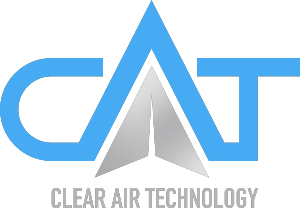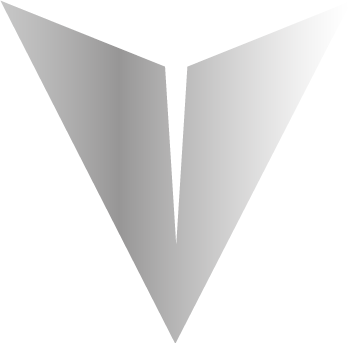SIRIUS
SIRIUS is our first-generation solution to the emerging market in Personal Air Mobility and has the ability to carry two people safely with virtually no discernible noise during flight whilst emitting zero emissions.
SIMPLE
CONVENIENT
INTUITIVE
The enhanced suite of avionics systems is designed to make the whole ownership and operating experience as simple, convenient and intuitive as owning a car and maintaining our concept of utilising tried and tested technologies we intend to produce each SIRIUS at a price point equivalent to an executive saloon.
Seamless Flight Control and Navigation
Currently fly by wire is utilised in all top of the range avionic systems but the next evolution in system controls utilises the latest fibre optic technology and has been termed “fly by light”. This is a fully integrated adaptive flight control system with many advantages incorporating much faster signal speeds, higher levels of redundancy and by taking away the wires eliminating electromagnetic interference.
We utilise a complete glass cockpit avionics system with a user friendly interface incorporating the latest in Traffic Collision and Avoidance Systems (TCAS) and utilising Automatic Dependent Surveillance Broadcast (ADS-B).
ADS-B is a way for an aircraft to determine its exact location and transmit it, allowing it to be tracked in real time by air traffic control (ATC) and other aircraft. Currently, radars can take up to 12 seconds to update an aircraft’s position. ADS-B equipment provides ATC with updated aircraft information almost every second, this increases visibility and reduces any risk of collision, even in regions without radar coverage.
In addition, ADS-B can provide traffic and weather information from governmentally certified sources – essentially, the pilot can see what ATC sees, for improved situational awareness to display local air traffic, real-time weather radar and immersive 3D terrain data.






Propulsion System
Using recently developed counter-rotating pairs of DC brushless motors utilising field oriented control these high performance electric motors are designed to run quietly, fluidly and completely emission free combining longevity of performance with the minimum of maintenance.
Each motor has its own dedicated controller monitoring voltage, current, rpm and torque as well as the system status and performance controlled by multiple flight computers which also manage the entire flight control system maintaining flight stability and smooth performance.
State of the art carbon fibre rotors individually matched to each motor are designed to rotate at comparatively low rpm making them vibration free, requiring virtually no maintenance and emitting low levels of noise that is virtually imperceptible from the ground when in flight.

Energy
Electricity is the driving force for this new mode of transport and initially, we will be using the latest maintenance-free, high capacity, fast charging lithium-ion batteries in separate banks for reliability and integrity. This is coupled with a large capacitor to store energy in the event of a loss of battery power to enable the vehicle to land safely under its own power.
The next major advancement in battery technology will be lithium metal, currently, there are still barriers to mass production but once resolved they can be manufactured in the same li-on facilities and for a fraction of the price.
The real revolution in green, cheap energy will be the utilisation of hydrogen fuel cells the current limiting factor being costly, carbon-intensive production methods coupled with the lack of distribution infrastructure. The future for the industry is utilising photo-electrocatalytic water splitting to create green hydrogen with virtually no running costs and there are several companies pioneering this revolution.
Sensor Fusion System
SIRIUS incorporates two systems that have never been used in general aviation before now and enhance the safety capabilities of our vehicle to a new level.
The first of these systems is LIDAR (Light Detection and Ranging) a system that works by firing thousands of laser pulses every second and then measuring how long it takes for the pulses to bounce back which enables the system to “see” a 3D image of an object, more effective than radar due to the level of detail it can recognise even down to power lines.
This is augmented by the utilisation of Camera Sensors similar to the systems used in many modern cars to detect hazards in the vehicles’ path. In SIRIUS these are used to identify obstacles in the flight path and potential landing areas, augmented by advanced algorithms that interpret video input that identifies any potential anomalies that might adversely affect the safety of the vehicle.


Inherent Redundancy System
The simplicity of design, the integrity of the systems and multiple backup options all lead to making SIRIUS the safest method of taking to the air.
One-third of the propulsion system could fail and the vehicle would still land safely and coupled with the advanced software this process could happen with little or no intervention from the pilot.
The most complex procedure in any aircraft or helicopter is the takeoff and landing process, whilst still under the full control of the pilot, SIRIUS has the software capable of completing both of these processes with virtually no input from the pilot and in an emergency situation either by remote operation from the ground or independently using AI.
Even with the multiple inherent redundancy systems making SIRIUS infinitely more reliable than even the most sophisticated GA aircraft or helicopter, to satisfy even the most safety conscientious pilot we have incorporated the latest ballistic safety parachute, a system that has been available for decades and is installed in more than 35,000 aircraft.

